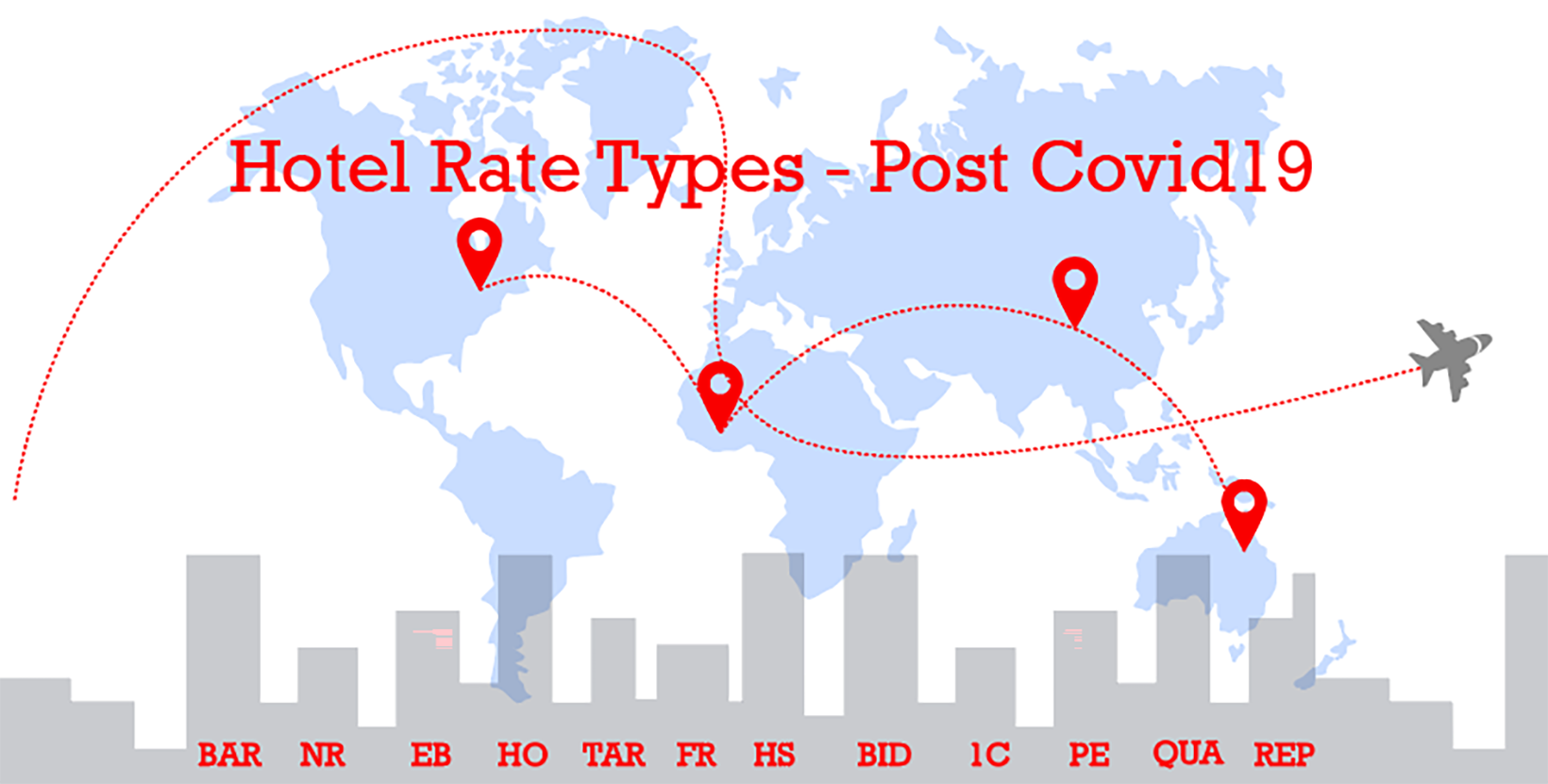Upon landing at Belfast International Airport in February 2020, it caught me by surprise to see visitors from northern Italy having to announce themselves and go through a separate “Covid control lane” adhering to additional questioning and health checks. The article “Covid-19; Tourisms Deathbed?” reflects on our speculations surrounding the evolution of the travel industry back in April 2020.
Time to move on from the pre-Covid Best Available Rates
Fast forward a year later (March 2021), this Covid lane has become the norm. The majority of travellers are being asked to present negative tests, temperature checks, and to keep their masks on in airports and hotels. With destination entry requirements changing constantly, travel has become a lot more dependant on where one can go to and what activities the local authorities deem safe. Posing as a real hassle for hotel operators to navigate these constant changes, April 2021 is vying to be the month of notable renewed interest in international travel. Thus, whilst we are all dreaming of a well-deserved trip abroad to see friends, visit clients or just a holiday on the beach drinking margaritas, are the Non-Refundable (NR), Early Bird (EB) and other variations of the Best Available Rate (BAR) still best suited to meet travellers' needs post covid?

Flexibility and personalization lead the way
Travel has been disrupted for too long, with new trends setting the tone if our rate strategies are to move forward. The pandemic has demanded that the travel industry be creative with its offerings, promoting flexibility with direct bookings and a push towards personalization. For example, mobile bookings surged in 2020 and staycations were often booked within a week's lead time.
So what new rates meet travellers' needs nowadays? Here are a few that successfully create some much needed traction.
- Hotel-Office Rate (HO) – Probably one of the first rates that emerged during the pandemic: the new segment of people working from home has created the need to change working environment. It is important to have the right office equipment at the hotel, in which case the client's company could eventually pay for the stay. Expect this rate to bring in weekday customers and allow space for small meetings to take place.
- Family Rate (FR) - Families need to spend time together - away. Major concerns include proper disinfecting of spaces and the use of in-house facilities, making the hotel facility an attractive option once again. Most destinations allow hotel guests to enjoy the hotel facilities such as restaurants, pools, etc, and that is an interesting proposal for families. Offering a discounted room for children along with the parents room allow families to accomplish this key goal. Expect long stays with this rate and additional spending on F&B and other facilities.
- Healthcare Staff rate (HS)- If there’s anyone that needs a break, it's those people working tirelessly to get us out of this mess. A b2b opportunity exists between hospital staff and hotels where part of the holiday can be subsides for, and an enjoyable service, such as dinner or a spa treatment offered by the hotel. Anticipate an average stay of about three to six nights, and a thankful segment to reward.
- Bid Rate (BID)- With historical data not giving us accurate forecasts, one way to tap into new market segments and go back to the traditional way of offering rates is by allowing clients to propose their price. This allows hotels to keep busy during these uncertain times. Platforms have emerged allowing hotels to do so seamlessly. Expect last minute staycationers looking to fill up those empty inventory units.
- One-Change Rate (1C) - Following in the airlines' footsteps, and giving consumers some flexibility due to the constant change of regulations, this rate offers clients a more secure way to book a non-refundable stay. These conditions allow clients to change their stay dates once, and pay the price difference. These are fairly secure bookings for both the traveller and the facility. Changes mainly depend on regulations.
- Personalized Experiences (PE) - Packages have always been interesting for travellers. However, in times when we tussle to find ways to attract new customers segments, building unique personalized experiences has become ever so important. Put on your local connoisseur shoes and propose packages that adventurous guests will appreciate.
- Quarantine Rate (QUA) - With so many that need to quarantine, a rate allowing people who stay for 3 to 10 consecutive days is becoming popular. This customer type will remain within their allocated space, and in-room entertainment can be a source of revenue. Do note that targeting this segment can affect the other segments' potential. However, it also depends on how the hotel manages to welcome this segment with safety as a main pillar in operations.
- Reopening Rate (REP) - With many hotels working at lower than usual occupancy throughout 2020 and part of 2021, having a date when things are expected to slowly come back to normal allows the hotel to build on their future REVPAR. June seems to be a safe bet, and encouraging clients to stay in-house with some in-house credit brings value to both the traveller and hotel. A value added rate could be the right way to go here. Expect a lot of advanced bookings and excited travellers.
- Targeted Rates (TAR) - T his rate follows markets that are open to travel, be it local opportunities such as children holidays or international travel due to relaxation of regulations. By doing so, the hotel's Search Engine Marketing (SEM) process targets the geographical region of the opened route allowing potential travellers to view the special rate. Liase well with transportation systems and expect these “open routes” to keep changing.
Conclusion
In an era when queuing in a Covid lane or having flexible, last minute holiday plans, have become the new norm, it is imperative to show agililty in adapting to the evolving demands of travellers. Identifying and offering rates which match the current environment should be the starting point to not only meet the requirements of a travel-deprived public but also to ignite the refined need of traveling. Waiting for the world to return to what it was is futile; the “new normal” is an opportunity to embrace all these digitally (or not) driven trends that the industry has been shy to adopt. The time is now for the hotel industry to be innovative and take the lead in getting the hospitality industry back on track.
Find out more about Hoskit Solutions.





